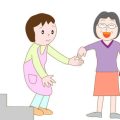Introduction to Swavalamban and Atmanirbharta in the Indian Context
India, a nation with deep-rooted traditions and vibrant diversity, has always cherished the ideals of self-reliance and self-sufficiency. These values are embodied in the concepts of Swavalamban (self-reliance) and Atmanirbharta (self-sufficiency), which hold significant relevance in the Indian context. Swavalamban refers to the ability of individuals and communities to rely on their own skills, resources, and strengths to overcome challenges, while Atmanirbharta extends this philosophy to a broader spectrum, emphasizing independence at personal, societal, and national levels.
Historically, these principles have guided Indian society through periods of struggle and transformation. From Mahatma Gandhi’s call for Swaraj (self-rule) during the freedom movement to present-day government initiatives like ‘Atmanirbhar Bharat Abhiyan,’ the pursuit of self-dependence resonates with India’s collective consciousness. For many Indian women, youth, and marginalized groups, Swavalamban is more than just an aspiration—it is a pathway towards empowerment and dignity.
The significance of Swavalamban and Atmanirbharta goes beyond economic independence; it encompasses emotional resilience, mental well-being, and social participation. In the face of modern pressures such as rapid urbanization, changing family structures, and increasing competition, these concepts offer a grounding force that aligns with core Indian values such as family unity (parivaarik ekta), community support (sahyog), and perseverance (dharana shakti). As India continues its journey towards holistic development, therapy approaches that nurture Swavalamban and Atmanirbharta can play a transformative role in fostering well-being at both individual and collective levels.
2. Cultural Perspectives on Mental Health in India
Understanding mental health within the Indian context requires a deep dive into both traditional beliefs and modern perspectives. India’s diverse cultural landscape shapes how mental health is perceived, discussed, and treated across regions and communities. Historically, mental health issues have been associated with stigma, misconceptions, and at times, supernatural interpretations. While there has been gradual progress toward acceptance and openness, many challenges persist in bridging the gap between tradition and contemporary understanding.
Traditional Views: Stigma and Silence
In many Indian societies, mental health struggles are often seen as a taboo subject. The stigma attached to conditions like depression or anxiety can lead individuals to conceal their experiences, fearing social isolation or shame. Traditionally, these challenges were sometimes attributed to fate (kismet), past karma, or even spiritual disturbances. Seeking professional help was rare; instead, people turned to religious leaders, family elders, or alternative healers.
Role of Family and Social Structures
The family unit remains central in Indian life. Joint families and close-knit communities offer a support system that can both protect and hinder individuals experiencing mental distress. On one hand, collective support provides comfort and practical help. On the other hand, strong social expectations may discourage open conversations about mental health due to concerns over family reputation (izzat) or marriage prospects (rishta). Here’s a comparison of traditional versus contemporary influences:
| Aspect | Traditional Approach | Contemporary Approach |
|---|---|---|
| Stigma | High, with silence or denial | Reducing gradually through awareness campaigns |
| Support System | Family/Community-based | Combination of family and professional support |
| Treatment Methods | Spiritual/religious interventions | Counseling/therapy by trained professionals |
| Openness to Discussion | Limited; conversation discouraged | Growing acceptance among youth & urban populations |
Community Support: Double-Edged Sword
The Indian concept of “we-ness” means people rarely face problems alone. Neighbours, friends, and extended relatives often step in during crises. This community approach can foster resilience but may also perpetuate gossip or judgment if someone seeks therapy.
Evolving Attitudes: Urban vs Rural Divide
Urban areas are witnessing a shift towards atmanirbharta (self-reliance) in mental health care—thanks to increased education and access to resources. However, rural regions still struggle with lack of awareness and accessibility. National initiatives like the Swavalamban Scheme encourage self-help and peer support groups that blend traditional values with modern therapeutic practices.

3. Therapeutic Approaches Rooted in Indian Traditions
India’s rich cultural heritage offers a treasure trove of therapeutic methods that have been practised for centuries, providing pathways to Swavalamban (self-reliance) and Atmanirbharta (self-dependence). These indigenous approaches not only honour local wisdom but also resonate deeply with the emotional, physical, and spiritual needs of individuals seeking holistic well-being.
Yoga: Union of Body and Mind
Yoga is more than just physical exercise; it is a comprehensive system for self-healing and inner transformation. Rooted in ancient Indian philosophy, yoga encourages discipline, self-awareness, and emotional regulation. Through asanas (postures), pranayama (breath control), and dhyana (meditation), individuals can cultivate resilience and independence, empowering themselves to navigate life’s challenges with confidence. Yoga studios and community centres across India often blend traditional teachings with modern insights, making this practice both accessible and culturally relevant.
Meditation: Cultivating Inner Strength
Meditation has long been recognised in Indian culture as a tool for achieving mental clarity and emotional balance. Techniques such as Vipassana, mindfulness, and mantra chanting are widely practised in India to foster self-reflection and personal growth. By nurturing a calm and focused mind, meditation enables individuals to become less dependent on external validation, fostering the spirit of Atmanirbharta. Many Indian therapists now incorporate meditation into their sessions, blending ancient wisdom with contemporary therapeutic goals.
Ayurveda: Holistic Healing for Self-Care
Ayurveda, India’s traditional system of medicine, emphasises the importance of balance among body, mind, and environment. With its personalised approach—considering one’s dosha (body constitution)—Ayurveda empowers individuals to take charge of their health through diet, herbal remedies, daily routines (dinacharya), and detoxification practices (panchakarma). This fosters Swavalamban by equipping people with the knowledge to manage their own well-being using locally available resources.
Indigenous Healing Practices
India is home to numerous regional healing traditions such as Siddha, Unani, homeopathy, naturopathy, tribal shamanic rituals, and folk therapies like oil massages or spiritual cleansing ceremonies. These practices often involve community participation and support systems that reinforce social bonds while encouraging individual autonomy. For example, group healing sessions or women-led support circles can create safe spaces for sharing experiences and developing coping strategies rooted in local customs.
Cultural Sensitivity in Therapy
Culturally appropriate therapy integrates these indigenous methods with modern psychological frameworks to address unique Indian realities. Therapists trained in both Western psychology and Indian traditions can offer hybrid models that validate clients’ lived experiences while guiding them towards self-sufficiency. This approach not only honours India’s diversity but also strengthens the movement towards Swavalamban and Atmanirbharta at both individual and community levels.
4. Modern Psychotherapeutic Interventions Adapted for Indian Clients
Modern psychotherapeutic models, especially Cognitive Behavioural Therapy (CBT) and Narrative Therapy, have shown immense potential in supporting Swavalamban (self-reliance) and Atmanirbharta (self-dependence) among Indian clients. However, Western approaches require sensitive adaptation to address the diverse cultural, linguistic, and familial realities prevalent across India.
Adapting CBT for Indian Contexts
Cognitive Behavioural Therapy is widely respected for its structured approach to addressing negative thought patterns and behaviours. In India, therapists increasingly blend CBT techniques with culturally relevant idioms and examples. For instance, addressing joint family expectations or societal pressures around marriage and career may be essential components of therapy sessions. Moreover, sessions are often conducted in regional languages such as Hindi, Tamil, or Bengali to ensure comfort and clarity.
| Western CBT Feature | Indian Adaptation |
|---|---|
| Individual focus on thoughts and feelings | Inclusion of family perspectives; exploring collective experiences |
| Standardised worksheets & homework | Contextualised tasks reflecting daily Indian life (e.g., rituals, festivals) |
| Direct self-expression encouraged | Indirect communication styles respected; use of metaphors common in Indian culture |
Narrative Therapy Tailored for Indian Realities
Narrative Therapy empowers individuals to re-author their life stories, a process deeply resonant with the Indian tradition of oral storytelling. Therapists encourage clients to frame their challenges within personal narratives that reflect values like resilience (Sahanubhuti), familial duty (Kartavya), and community support (Samudaayik Sahayata). This helps clients find meaning in adversity while aligning with culturally significant virtues.
Language Sensitivity in Therapeutic Practice
Effective therapy in India must embrace multilingualism and local idioms. Skilled therapists switch between English and regional languages as needed, ensuring that psychological concepts are not lost in translation. Metaphors rooted in mythology or folk tales—such as referencing the journey of Arjuna from the Mahabharata—can make abstract concepts more accessible and relatable.
The Role of Family Systems in Therapy
Unlike many Western models that focus primarily on the individual, Indian psychotherapeutic interventions frequently engage family members. Therapists facilitate dialogues between generations to bridge value gaps and foster mutual understanding. This systemic approach honours the interconnectedness central to Indian society and supports sustainable self-reliance within familial frameworks.
5. Empowering Individuals with Swavalamban-focused Therapy
Understanding Swavalamban in the Indian Context
Swavalamban, which means self-reliance in Hindi, is deeply embedded in Indian values and traditions. In therapy, fostering swavalamban involves recognizing each client’s unique cultural background, personal strengths, and community ties. Therapists can help clients reflect on their own definitions of independence, rooted in family, societal expectations, and spiritual beliefs. By drawing on concepts like Atmanirbharta (self-sufficiency) promoted by national initiatives, therapists connect modern mental health practices with indigenous wisdom.
Strategies for Building Self-Efficacy
To cultivate self-efficacy, therapists can employ interventions such as strength-based counseling, goal setting, and skills training. Encouraging clients to identify their existing resources—be it family support, local networks, or traditional knowledge—can empower them to take active steps towards well-being. Techniques like motivational interviewing and solution-focused brief therapy help clients recognize past successes and envision future possibilities. For example, celebrating small achievements in managing stress or interpersonal relationships reinforces a sense of agency.
Culturally Responsive Interventions
Therapists should integrate culturally relevant metaphors and stories from Indian epics or folk tales to illustrate resilience and self-mastery. Incorporating mindfulness techniques derived from yoga and meditation aligns therapeutic work with familiar Indian practices. Group therapy models that reflect the collectivist ethos prevalent in many Indian communities can provide both peer support and a platform for sharing strategies for overcoming challenges.
Encouraging Active Participation
A key component of swavalamban-focused therapy is ensuring that clients remain active participants in their healing journey. Therapists can co-create personalized action plans with clients, allowing them to set priorities and make informed decisions about their mental health care. This collaborative approach nurtures autonomy while respecting familial roles and responsibilities that are significant in Indian society.
Addressing Barriers to Self-Reliance
It is essential to acknowledge barriers such as stigma around mental health, gender roles, or economic challenges that may impact a client’s path toward self-reliance. Therapists can work alongside clients to strategize ways to navigate these obstacles—such as facilitating access to community resources or advocating for supportive environments at home and work.
Celebrating Progress Toward Atmanirbharta
Regularly reflecting on progress—no matter how small—helps reinforce a sense of accomplishment. Therapists should encourage clients to share their victories within trusted circles, thereby normalizing conversations around personal growth and well-being. By integrating these culturally attuned strategies, therapists can truly empower Indian clients to become architects of their own swavalamban and atmanirbharta journeys.
6. Community and Social Support Structures in Building Atmanirbharta
The Role of Community-Based Programmes
In India, the essence of atmanirbharta (self-reliance) is deeply rooted in collective wellbeing, where community-based programmes serve as vital platforms for personal growth and recovery. Especially in rural Bharat, such initiatives bridge the gap between professional therapy and cultural realities. These programmes often include self-help groups, women’s collectives, and vocational training centres that empower individuals—especially women—to discover their strengths and build sustainable livelihoods. In cities like Mumbai or Bengaluru, urban slum communities benefit from tailored support circles, facilitating emotional healing and practical skill-building within familiar cultural contexts.
NGOs: Catalysts for Swavalamban
Non-governmental organisations (NGOs) across India play a pivotal role in championing swavalamban (self-sufficiency). From SEWA’s empowerment of working women in Gujarat to Snehi’s mental health outreach in Delhi, these NGOs offer both therapeutic interventions and economic opportunities. They train local volunteers as para-counsellors who understand regional languages and customs, making therapy more accessible and relatable. Their advocacy also breaks down stigma attached to mental health challenges, creating safe spaces for dialogue and support. By collaborating with government schemes like NRLM or PMKVY, NGOs ensure that atmanirbharta is not just an individual journey but a societal movement.
Local Support Networks: The Heartbeat of Resilience
Across Indian towns and villages, informal support networks—be it the neighbourhood chai adda or temple committees—act as natural healing spaces. Trusted elders, panchayat leaders, and local teachers often become first responders for those facing emotional distress or life transitions. When these networks are sensitised through workshops on mental wellbeing and trauma recovery, they can identify early signs of distress and connect individuals to appropriate resources. Importantly, such community-driven support respects traditional values while introducing evidence-based therapeutic practices.
Cultural Integration for Holistic Healing
Community healing in India thrives when therapy approaches are woven into the fabric of local culture—using folk music, storytelling, or yoga circles as mediums for expression and coping. Programmes that celebrate diversity—across caste, religion, gender, or ability—ensure inclusivity and foster belongingness. This blend of modern psychology with Indian sensibilities nurtures confidence (aatm-vishwas) and encourages every individual to step forward on their path towards atmanirbharta.
7. Case Studies and Success Stories from India
Real-life stories from across India beautifully illustrate how therapy approaches can foster Swavalamban (self-reliance) and Atmanirbharta (self-dependence) in unique and culturally relevant ways. These narratives shine a light on the transformation possible when individuals are supported with mindful, evidence-based interventions tailored to their contexts.
Empowering Women through Group Therapy in Maharashtra
In a small village near Pune, a women’s self-help group engaged in cognitive-behavioural group therapy sessions facilitated by a local psychologist. Many of these women, initially hesitant to speak about personal struggles, slowly found their voices through supportive dialogue and culturally sensitive activities. Over six months, they reported increased confidence in managing household finances, negotiating for children’s education, and even starting micro-businesses. Their journey towards Swavalamban was not just about economic empowerment but also emotional healing and self-trust.
Restoring Hope among Youth in Bengaluru’s Urban Slums
A community centre in Bengaluru collaborated with mental health professionals to offer narrative therapy workshops for adolescent boys and girls. Using storytelling—a practice deeply rooted in Indian tradition—the youth explored their challenges around unemployment and family expectations. By re-authoring their life stories, several participants identified new career paths or returned to school with renewed determination. This approach nurtured Atmanirbharta, helping them realize that their past did not dictate their future possibilities.
Mental Health First Aid in Rural Rajasthan
In Rajasthan, Accredited Social Health Activists (ASHAs) were trained to provide basic counselling skills using an adapted mental health first aid model. Through home visits and community meetings, ASHAs addressed issues ranging from anxiety to domestic violence, connecting people with formal therapy when needed. The visible reduction in stigma and the willingness of villagers to seek help demonstrate how indigenous leadership and therapy can together foster resilient, self-reliant communities.
The Journey of a Differently-Abled Entrepreneur in Kolkata
Sohini, a young woman with locomotor disability from Kolkata, accessed occupational therapy combined with vocational training through an NGO. With the support of her therapist who understood both her physical needs and her dreams, Sohini launched a homemade snacks business catering to local tastes. Her story has inspired others facing similar challenges, proving that personalized therapy can be instrumental in achieving true Atmanirbharta.
Cultural Adaptation as the Key to Success
Across these diverse settings—from metropolitan cities to rural hamlets—the common thread is the cultural adaptation of therapeutic techniques. By blending traditional Indian values such as collective well-being, respect for elders, and spiritual resilience with modern psychological tools, therapists are able to create meaningful change rooted in local realities.
Building a Tapestry of Self-Reliance Across India
These case studies affirm that when therapy is accessible, inclusive, and attuned to Indian culture and idioms, it holds immense potential for enabling Swavalamban and Atmanirbharta at every stage of life. As more individuals share their journeys of recovery and empowerment, they weave a vibrant tapestry of hope that can inspire families, communities, and the nation at large.


